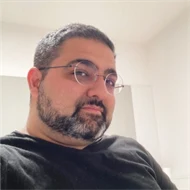Al‑1wt%Fe Alloy Anode Containing Nano Particles Enhancing Aluminum Battery Performance
Aluminum-based batteries are one of the candidates that could satisfy sustainability requirements. Al is abundant, and has a low cost, good safety, and good recyclability.
Aluminum-based batteries are a promising candidate for next-generation batteries due to their high theoretical capacity, costeffectiveness, and environmentally friendly features. Various materials have been investigated as cathodes in Al-ion batteries.
Among, graphitic materials have shown good results. In the Al anode, problems related to the passivation layer and corrosion of aluminum are a serious challenge, limiting the Al-ion battery performance. In this project, the specific focus will be given to the aluminum alloy anode and the electrolyte. We have recently shown that controlled corrosion of an aluminum alloy containing 1wt% Fe anode can enhance the capacity and the cyclability of the battery. This was attributed to precipitation of high number of Al3Fe particles, which weakened the oxide layer. This project aims to pursue this novel strategy further using special rolling
operation technique. Hypothesis is that a special rolling operation on Al-1wt%Fe alloy ingot will increase the number of Al3Fe phases with fragmenting these particles into nano particle. This would further weaken the passive oxide, and eventually enhance the behavior of Al anode.
Moreover, a new cheap and environmentally friendly electrolyte of deep eutectic electrolyte (DES) also will be used for aluminum-graphitic battery cell. This is an important parameter to develop an aluminum-graphitic battery towards industrialization. The results of this project will lead to development of aluminum battery. It deepens the understanding of aluminum corrosion and oxide behavior of aluminum, which is a challenge during electrochemical performance of battery. It will also explore the (DES) electrolyte as a candidate electrolyte for commercialization of aluminum battery.
The project is finansied by J. Gust. Richerts foundation.
Facts
Project period
230901-240731
Research centers
Project leader
